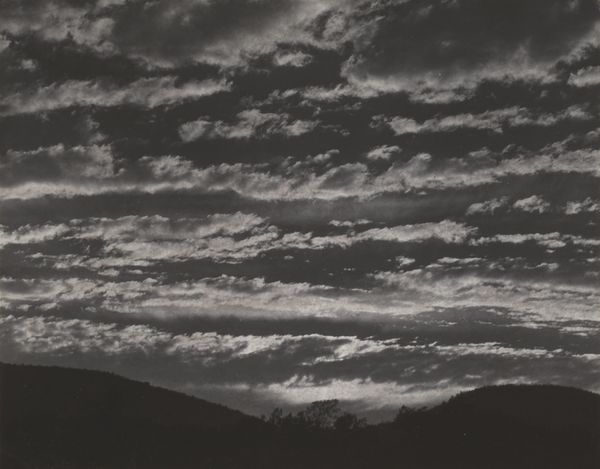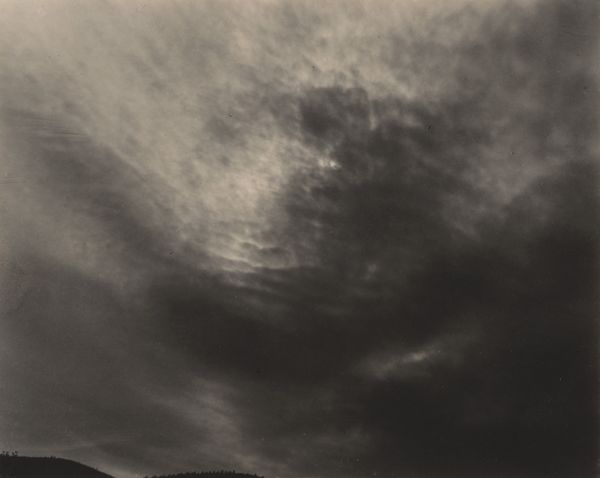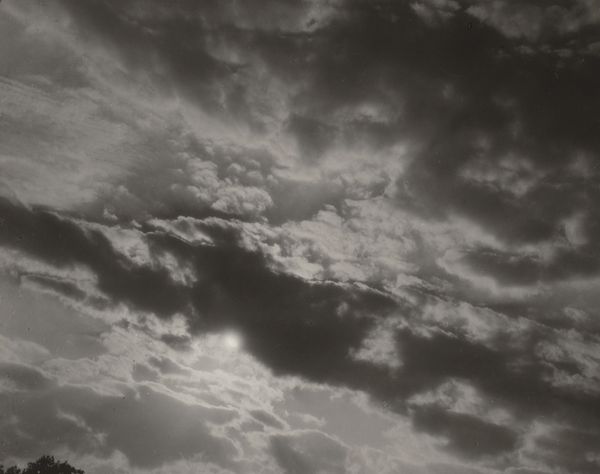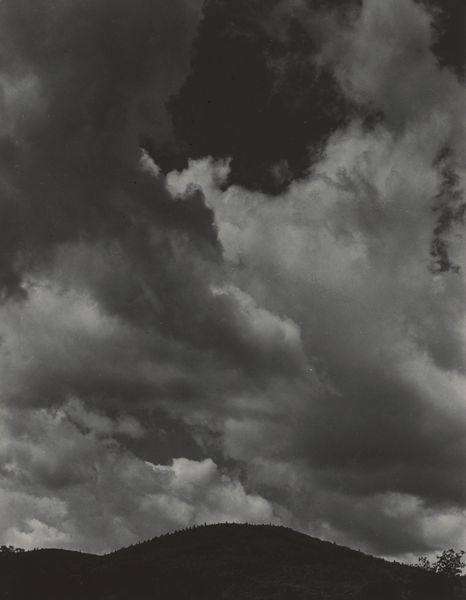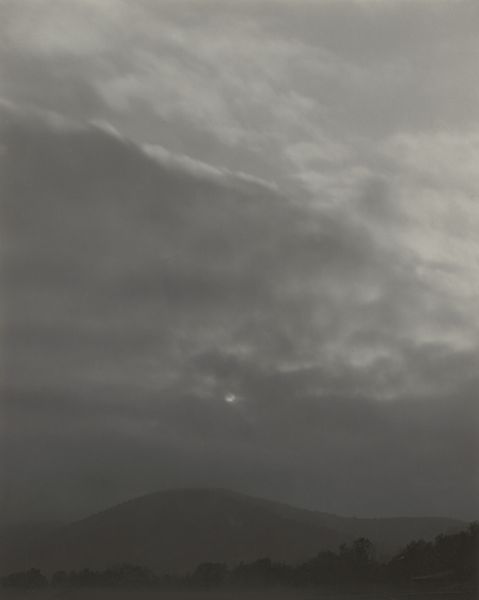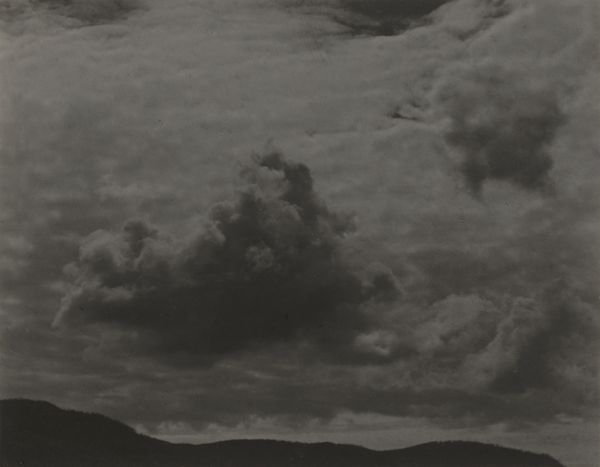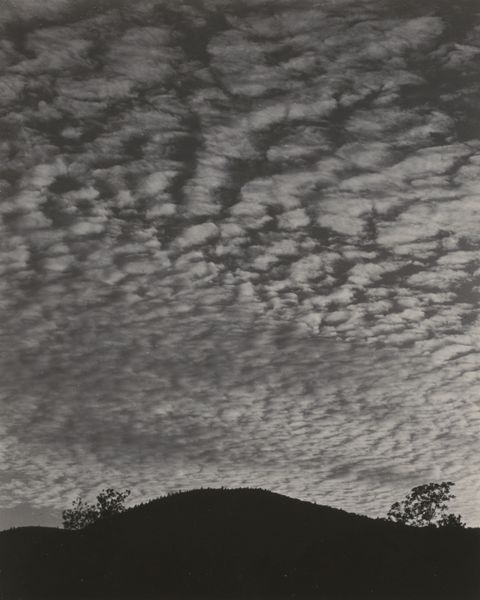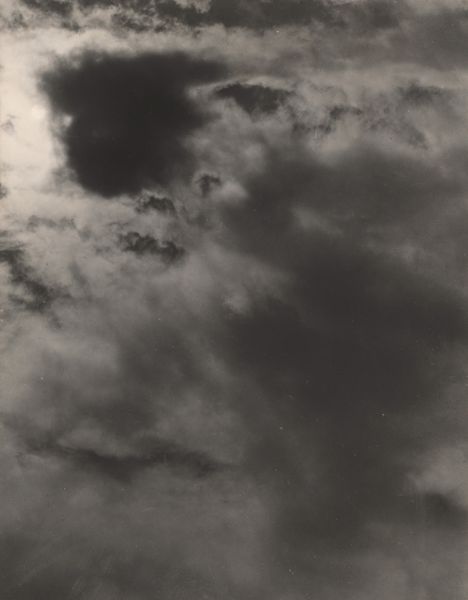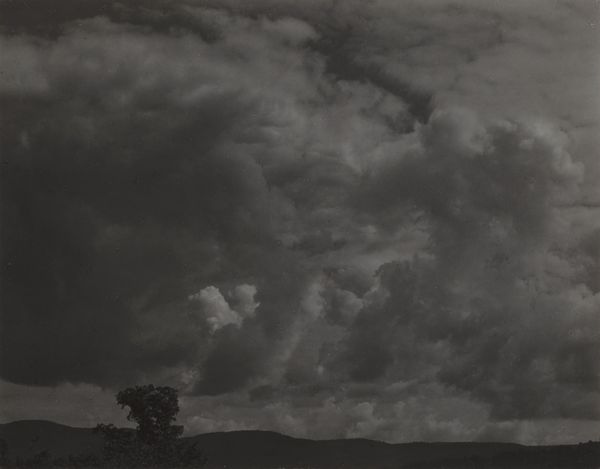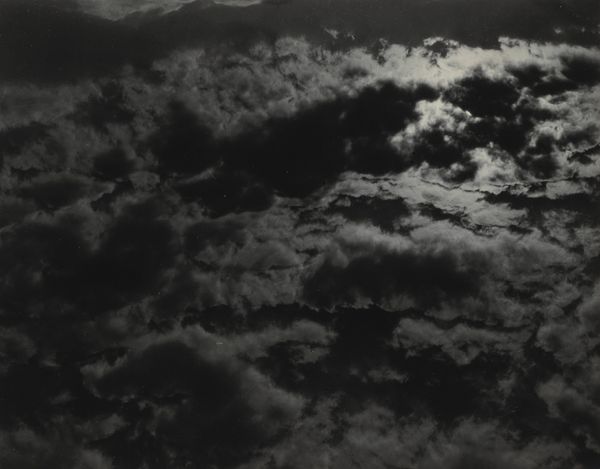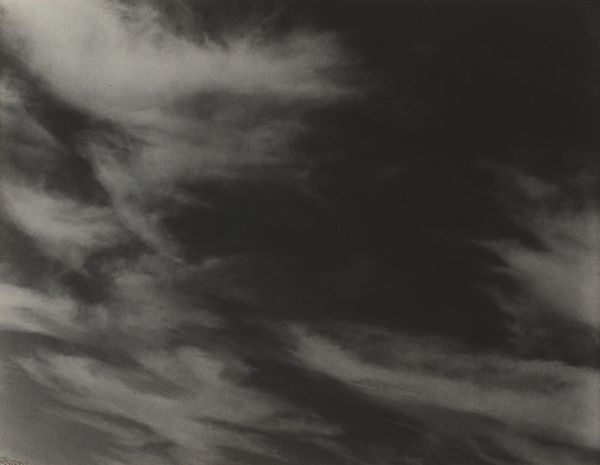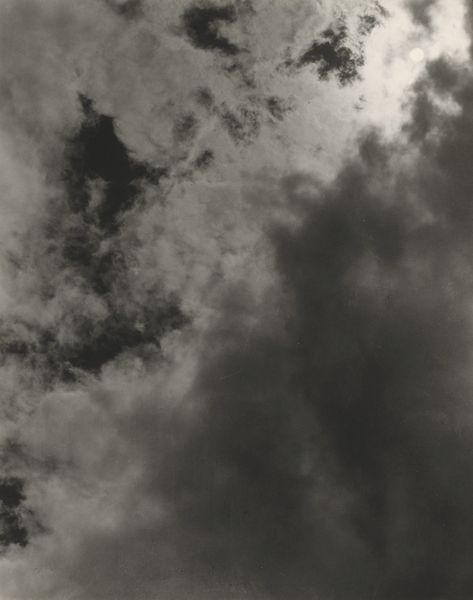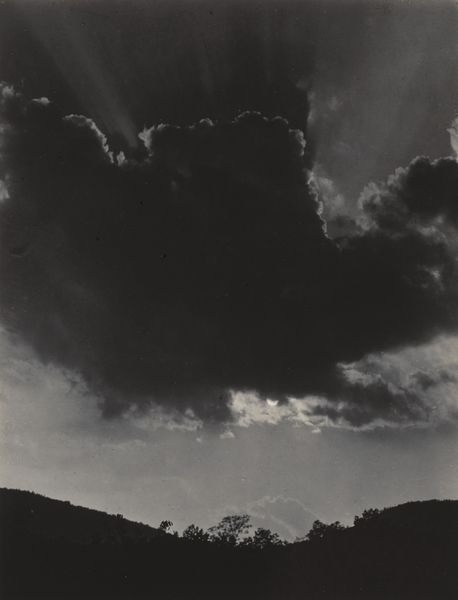
#
twilight
#
snowscape
#
outdoor scenery
#
low atmospheric-weather contrast
#
landscape photography
#
sky photography
#
monochrome photography
#
gloomy
#
skyscape
#
shadow overcast
Dimensions: sheet (trimmed to image): 11.7 x 9.2 cm (4 5/8 x 3 5/8 in.) mount: 34.2 x 27.6 cm (13 7/16 x 10 7/8 in.)
Copyright: National Gallery of Art: CC0 1.0
Curator: What a powerful image! We are looking at "Songs of the Sky", a photograph taken in 1924 by Alfred Stieglitz. It is a striking black and white photograph dominated by cloud formations above a darkened horizon. Editor: It's immediately striking. The sky feels heavy, almost oppressive. The contrast between the dark land and turbulent sky creates a palpable sense of tension and perhaps, a foreboding atmosphere. Curator: Stieglitz's choice to focus on the sky is quite telling. Skies, throughout history, have symbolized vastness, the divine, and the realm of imagination. The clouds themselves, morphing and changing, evoke feelings and stir symbolic thinking about impermanence and the sublime. Editor: Absolutely. And Stieglitz, within the context of the early 20th century, I can't help but read this in relation to a world moving ever faster toward modernization and also global conflict. The lack of human presence could symbolize nature as the ultimate and indifferent witness, something which remains constant. The tonal qualities remind me of earlier Romantic painters. Curator: It could also be viewed as a deliberate abstraction. Stieglitz sought to elevate photography to the status of fine art through his series of cloud photographs, called "equivalents." They were meant to be a form of self-expression, with the forms and tones serving as equivalents to his own inner states. Editor: That brings up an interesting tension: public and private meaning-making, with nature a witness to personal psychological expression. Can the two be separated? I think the beauty here lies precisely in their inseparability and our collective attempt to interpret something so open to our gaze. The human eye searches for structure and meaning, wherever it falls. Curator: Perhaps the image is a mirror then, reflecting both individual experiences and collective anxieties through its carefully composed abstract qualities. Editor: Precisely. I think that even without prior knowledge of Stieglitz, it’s this quality that enables the image to still speak to us now, even decades later, regardless of whether we're aware of all the potential layers that inform our interpretation. Curator: It's amazing to reflect how one man looking up at the sky with a camera has given us so much to contemplate through our contemporary moment. Editor: Indeed, and how the continuous, almost infinite presence of the natural world can hold us in our place, both personally and as an entire human race.
Comments
No comments
Be the first to comment and join the conversation on the ultimate creative platform.
